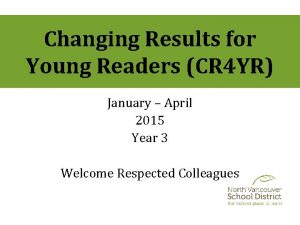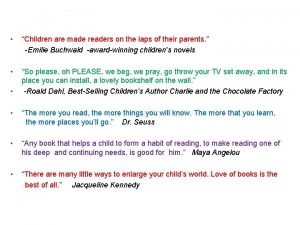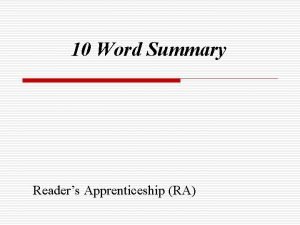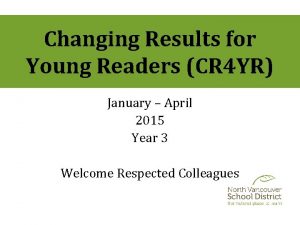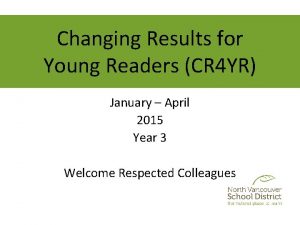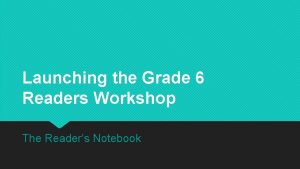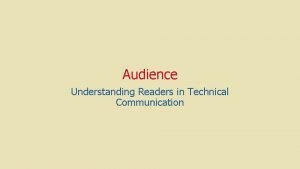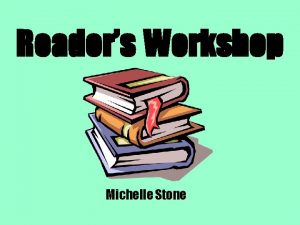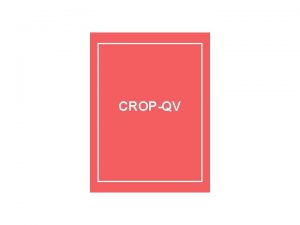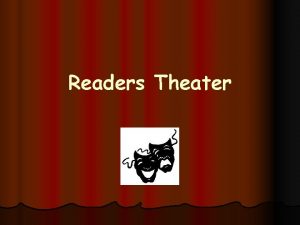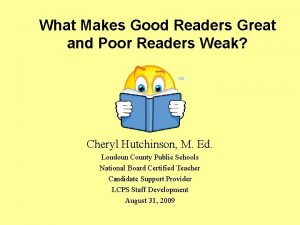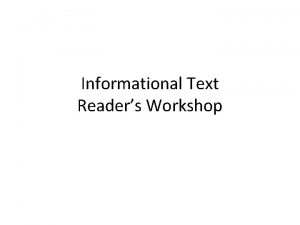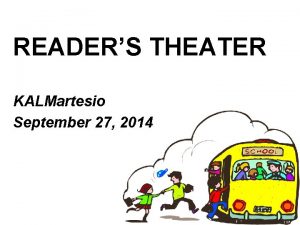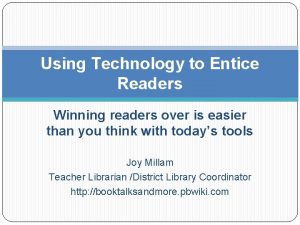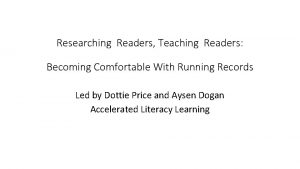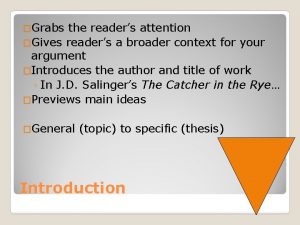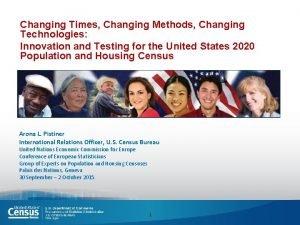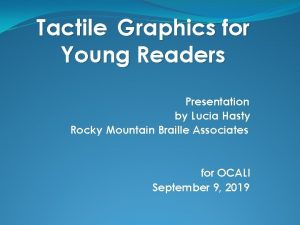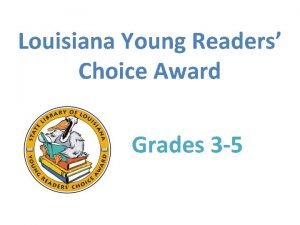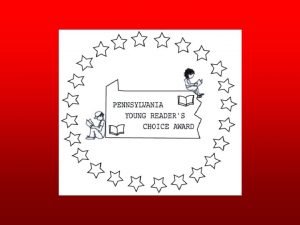Changing Results for Young Readers CR 4 YR









































































- Slides: 73

Changing Results for Young Readers CR 4 YR Intermediate Series January 2016 Year 4

Traditional Welcome We would like to start by acknowledging and thanking the Coast Salish people whose traditional territory North Vancouver School District resides on. We express our gratitude to the Squamish Nation and the Tsleil-Waututh Nation. We value the opportunity to learn, live and share educational experiences on this traditional territory.

Reconnaissance du territoire traditionnel J’aimerais reconnaître et remercier les peuples autochtones de la côte Salish dont leur territoire traditionnel est le siège de la Commission scolaire de Vancouver Nord. Nous exprimons notre gratitude envers les Nations Squamish et Tsleil-Waututh. Nous apprécions l’occasion d’apprendre, de vivre et de partager des expériences éducatives sur ce territoire traditionnel.

CR 4 YR 2016 Leadership Team • Kammi Clark • Ann Copp • Jenny Crowe • Jillian Gordon • Cheryl Ham • Johneen Harris • Jessica Johnson • Heather Myhre • Nicky Paiuk • Nadya Rickard • Darlene Sulis • Stephanie Weller

Review Session #1 • To enhance Literacy Leader and teacher capacity in literacy instruction • To understand the intermediate reader • To explore literacy resources and strategies for the intermediate classroom University of Toronto “balanced literacy diet”www. litdiet. org

Review Session #2 • To understand the importance of fluency and oral language in the intermediate classroom • To explore and enhance strategies for teaching and assessing oral language and fluency

Learning Targets Session #3 • Explore aspects of comprehension • Understand how comprehension changes and develops in the intermediate grades • Enhance teacher's repertoire of strategies to help struggling readers with comprehension

Literacy Resources http: //cr 4 yr. ca http: //literacy 44. ca

Balanced Literacy Learning Graphic from: University of Toronto “balanced literacy diet”www. litdiet. org How to Videos Motivation #56

Where to Start? Emergent Reading Session 1 Engagement Print Work Session 2 Fluency COMPREHENSION Fiction/ Literature Plot / Setting Themes / Ideas Vocab / Fig. Lang. Character Nonfiction / Information Vocabulary Main Idea Key Details Text Features

Reading in Intermediate “Reading is not a subject that is taught only in the primary grades, but a subject that needs to continue to be taught throughout elementary school and beyond. ” (Gear, 2006)

Comprehension in Intermediate How is comprehension in Intermediate grades different than in Primary grades?

Walking a Mile in their Shoes www. plickers. com

What is Comprehension? “The goal of comprehension is to acquire and actively use knowledge” (Harvey & Daniels, 2009)

Growing Great Readers 1. Reading Principle 2. Response Principle 3. Explicit Instruction Principle

Sorting Activity Sort headings from low level high level thinking

Comprehension Continuum

Comprehension Continuum

Comprehension Continuum

Comprehension Continuum

Comprehension Continuum

Comprehension Continuum

Comprehension Continuum

Comprehension Continuum

Comprehension Strategies What strategies do students need to use to comprehend something?

Comprehension Strategies As a table group, rank your top three strategies.


Comprehension Strategies Self-Regulating Summarizing Making Meaningful Connections Inferring

Comprehension Strategies WHY FOUR STRATEGIES? “Less is more” philosophy that promotes a “depth of understanding of a few powerful, transferable strategies rather than exposure to a breadth of strategies that become mind boggling and disconnected. ” (Lanning, 2009)

Curriculum Connections

Curriculum Connections

The Think Aloud “Much of what happens with texts in classrooms gives students the mistaken impression that reading comprehension happens by magic. To begin to build a repertoire of activities for reading comprehension, students need to have the reading process demystified. The need to see what happens inside the mind of a proficient reader, someone who is willing to make the invisible by externalizing his or her mental activity. ” (Greenleaf, Murphy, & Schoenbach, 2012)

Gradual Release of Responsibility

Self Regulating

Self Regulating “When self regulating, a reader is continuously checking his or her reading to make sure it makes sense, and is using a variety of ‘fix up’ skills when it does not make sense. ” (Lanning, 2009)

Self Regulating LITERACY 44 Learning is holistic, reflexive, reflective, experiential and relational Learning involves recognizing the consequences of one’s actions. Learning involves patience and time Learning requires exploration of one’s identity

Questions That Drive Thinking • This reminds me of… • I’m predicting that… • From my background knowledge I know…. • Should/shouldn’t there be… • I can just picture… • I’m a little confused here… • I’m not sure of…. • The key idea here is… • This is worth remembering, I think … • I think that the author … • I need to go back and reread that part… • Remember when it said …

Self-Monitoring When students self-monitor they need to: • be aware when meaning breaks down • identify what it is they do not understand (word, sentence, paragraph) • use appropriate strategies to “fix-up”, to restore meaning.

Some Fix- Up Strategies 1. Slow Down 2. Reread 3. Use aids (maps, graphs, charts) 4. Continue reading to see if the next part makes sense 5. Use the glossary or dictionary 6. Ask another student 7. Ask an adult

Self Regulating

Leaving Tracks of Thinking

Self Regulating

School Action Plan

Summarizing

Summarizing

Summarizing “Summarizing requires the reader to identify, paraphrase, and integrate important text information. Summarizing may occur across different lengths of text; it is a strategy in which a reader is constantly synthesizing the important ideas in text. ” (Lanning, 2009)

Summarizing LIT 44 Learning is embedded in memory, history, and story Learning involves recognizing that some knowledge is sacred and only shared with permission and/or in certain situations

Summarizing What You Want to Do: • Pull out the main ideas • Focus on key details • Use key words and phrases • Break down larger ideas • Be clear and concise – only include enough to get the gist of the article

Questions That Drive Thinking • What’s important here … • What matters to me … • One thing we should notice … • I want to remember … • It’s interesting that … • The most important facts are … • I think the big idea / main point is … • This is important

Summarizing

Summarizing

Summarizing Some ideas: • Crossing out strategy • Tweet your response • Summarizing on a budget

Summarizing

School Action Plan

Making Connections

Meaningful Connections

Meaningful Connections “Readers make connections with text in a variety of ways. Connections…are made by bringing ones’ background knowledge to the information in the text. When creating meaningful connections, a reader is relating his or her previous experiences, knowledge, and/or emotions to the ideas presented in the text. ” (Lanning, 2009)

Making Connections LITERACY 44

Questions That Drive Thinking • • • This reminds me of … I know another … I’ve read another … I’ve watched another … I remember when … This part is like. . The character is like … This is similar to / different from … I can relate to this character because … I have had a similar experience when …

Reading Response Idea

Making Connections

School Action Plan

Inferring

Inferring “Inferring is an essential reading strategy, as it not only facilitates comprehension, but it also enhances the reader’s enjoyment of the text as new perspectives are discovered. ” (Lanning, 2009)

Inferring LITERACY 44 Learning is embedded in memory, history, and story

Questions That Drive Thinking • This makes me think that … • I think that the author is really saying … • At first I thought … but now I think … • This clue leads to believe that … • After reading this chapter / page, I suspect … • I think I understand what the author meant when he or she wrote …

Inferring Look in the bags at your table…. Make some inferences as to who this suitcase belongs to and/or where this person is going (or has been) Complete the Claim, Support, Question

Inferring

The Power of Reading https: //www. youtube. com/watch? v=83 DO 0 POac. CE

Reflect on the CR 4 YR Series

School Action Plan

Series Feedback Complete third Survey email Kathleen Barter

CR 4 YR 2016 Leadership Team • Kammi Clark • Ann Copp • Jenny Crowe • Jillian Gordon • Cheryl Ham • Johneen Harris • Jessica Johnson • Heather Myhre • Nicky Paiuk • Nadya Rickard • Darlene Sulis • Stephanie Weller h T k n a u yo
 Changing results for young learners
Changing results for young learners Critical reading meaning
Critical reading meaning Datorkunskap för nybörjare
Datorkunskap för nybörjare Tack för att ni har lyssnat
Tack för att ni har lyssnat Big brother rösta
Big brother rösta Vad står k.r.å.k.a.n för
Vad står k.r.å.k.a.n för Treserva lathund
Treserva lathund Sju principer för tillitsbaserad styrning
Sju principer för tillitsbaserad styrning Påbyggnader för flakfordon
Påbyggnader för flakfordon Ro i rom pax
Ro i rom pax Tack för att ni har lyssnat
Tack för att ni har lyssnat Datumr
Datumr Lågenergihus nyproduktion
Lågenergihus nyproduktion Tidbok för yrkesförare
Tidbok för yrkesförare Rutin för avvikelsehantering
Rutin för avvikelsehantering Presentera för publik crossboss
Presentera för publik crossboss Shivaismen
Shivaismen Formuö
Formuö Inköpsprocessen steg för steg
Inköpsprocessen steg för steg Kolopskopi
Kolopskopi Tack för att ni har lyssnat
Tack för att ni har lyssnat Strategi för svensk viltförvaltning
Strategi för svensk viltförvaltning Tack för att ni lyssnade bild
Tack för att ni lyssnade bild Referatmarkering
Referatmarkering Fimbrietratt
Fimbrietratt Shingelfrisyren
Shingelfrisyren Vätsketryck formel
Vätsketryck formel Läkarutlåtande för livränta
Läkarutlåtande för livränta Tack för att ni lyssnade
Tack för att ni lyssnade Borra hål för knoppar
Borra hål för knoppar Egg för emanuel
Egg för emanuel Smärtskolan kunskap för livet
Smärtskolan kunskap för livet Mat för unga idrottare
Mat för unga idrottare A gastrica
A gastrica Teckenspråk minoritetsspråk argument
Teckenspråk minoritetsspråk argument Meios steg för steg
Meios steg för steg Typiska drag för en novell
Typiska drag för en novell Myndigheten för delaktighet
Myndigheten för delaktighet Rbk mätning
Rbk mätning Autokratiskt ledarskap
Autokratiskt ledarskap Rita perspektiv
Rita perspektiv Kung dog 1611
Kung dog 1611 Att skriva debattartikel
Att skriva debattartikel Redogör för vad psykologi är
Redogör för vad psykologi är Tobinskatten för och nackdelar
Tobinskatten för och nackdelar Bästa kameran för astrofoto
Bästa kameran för astrofoto En lathund för arbete med kontinuitetshantering
En lathund för arbete med kontinuitetshantering Svenskt ramverk för digital samverkan
Svenskt ramverk för digital samverkan Karttecken
Karttecken Uppställning multiplikation
Uppställning multiplikation Vilken grundregel finns det för tronföljden i sverige?
Vilken grundregel finns det för tronföljden i sverige? Elektronik för barn
Elektronik för barn Förklara densitet för barn
Förklara densitet för barn Ministerstyre för och nackdelar
Ministerstyre för och nackdelar Bris för vuxna
Bris för vuxna Tack för att ni lyssnade bild
Tack för att ni lyssnade bild Vem räknas som jude
Vem räknas som jude Frgar
Frgar Nyckelkompetenser för livslångt lärande
Nyckelkompetenser för livslångt lärande Informationskartläggning
Informationskartläggning Humanitr
Humanitr Stål för stötfångarsystem
Stål för stötfångarsystem Toppslätskivling effekt
Toppslätskivling effekt Cks
Cks Adressändring ideell förening
Adressändring ideell förening Verktyg för automatisering av utbetalningar
Verktyg för automatisering av utbetalningar Urban torhamn
Urban torhamn Ramsa geometriska former
Ramsa geometriska former Bunden och fri form
Bunden och fri form Ledarskapsteorier
Ledarskapsteorier Formel för standardavvikelse
Formel för standardavvikelse Antika plagg
Antika plagg Children are made readers on the laps of their parents
Children are made readers on the laps of their parents 10 word summary
10 word summary
